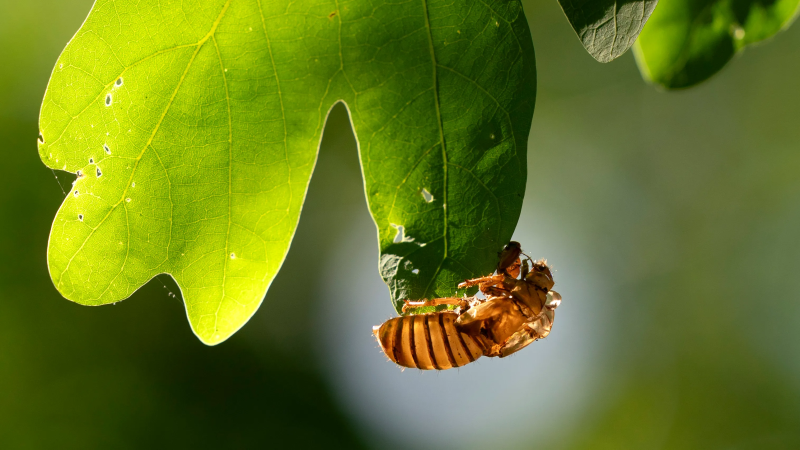When will cicadas go away? Depends where you live, but some have already started to die off
After weeks of hearing the near-constant noise from the periodical cicadas that have emerged in nearly 20 states this year, you may soon be hearing a lot more silence.
After spending 13 or 17 years underground and weeks above ground, some of the earliest periodical cicadas are completing their life cycle and starting to die off. The cicadas, the 13-year Brood XIX in the Southeast and the 17-year Brood XIII in the Midwest, are part of a rare occurrence − the two broods have not emerged together since 1803.
If you're in one of the roughly 17 states that has seen either brood (or both, if you live in Illinois or Iowa), the cicadas' time to eat, mate, lay eggs and die may be starting to come to a close.
Here's what to expect about when Brood XIX and Brood XIII cicadas will start to die off.
'One in a million':2 blue-eyed cicadas spotted in Illinois as 2 broods swarm the state
When will Brood XIX, Brood XIII cicadas start to die off?
The Brood XIX cicadas that emerged in mid-April are already declining, said Gene Kritsky, a cicada expert and professor in the Department of Biology at Mount St. Joseph University in Cincinnati, Ohio.
Kritsky previously told USA TODAY the first adult cicadas were reported to Cicada Safari, a cicada tracking app developed by Mount St. Joseph University, on April 14 in Georgia, parts of Tennessee and Alabama. In the following week, they came out in North Carolina and South Carolina.
Brood XIII cicadas in central Illinois will see declines in about three weeks, Kritsky said, and in about four weeks in Chicago.
How long will the cicadas be above ground?
How long cicadas live depends on their brood and if they are an annual or periodical species.
The two periodical broods this summer are Brood XIX, which have a 13-year life cycle, and Brood XIII, which have a 17-year life cycle.
Once male and female periodical cicadas have mated and the latter has laid its eggs, the insects will die after spending only a few weeks above ground − anywhere from three to six weeks after first emerging.
That means many of this year's periodical cicadas are set to die in June, though some may have already died off in late May and others could last until early July, depending on when they emerged.
The nymphs of annual cicadas remain underground for two to five years, according to the Missouri Department of Conservation. These cicadas are called "annual" because some members of the species emerge as adults each year.
What is the life cycle of a cicada?
The life cycle of a cicada starts with mating. The female then lays eggs in holes made in tree branches and shrubs, National Geographic reports. The eggs will hatch after six to 10 weeks and the cicada nymphs will burrow themselves into the ground, attaching to the tree's roots.
The cicadas will remain underground for a "dormant period" of two to 17 years, depending on the species. Then they emerge in adult form, according to National Geographic.

2024 cicada map: Where to find Broods XIII, XIX this year
The two cicada broods were projected to emerge in a combined 17 states across the South and Midwest. They emerge once the soil eight inches underground reaches 64 degrees, which began in many states in April and May and will last through late June.
The two broods last emerged together in 1803, when Thomas Jefferson was president.
Disclaimer: The copyright of this article belongs to the original author. Reposting this article is solely for the purpose of information dissemination and does not constitute any investment advice. If there is any infringement, please contact us immediately. We will make corrections or deletions as necessary. Thank you.






